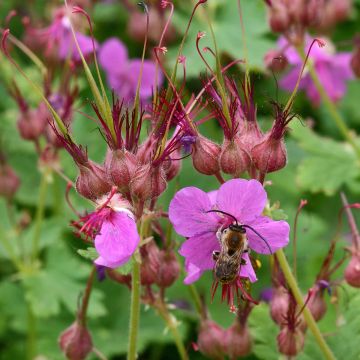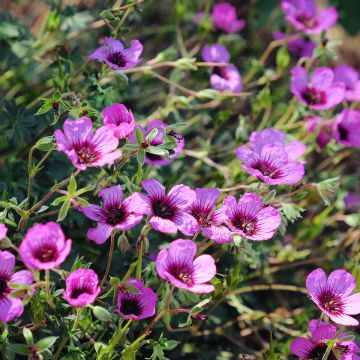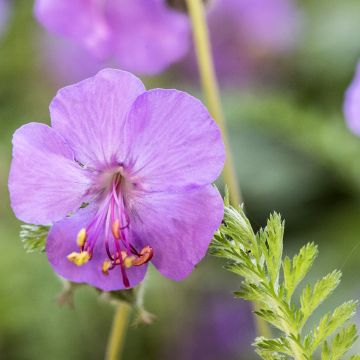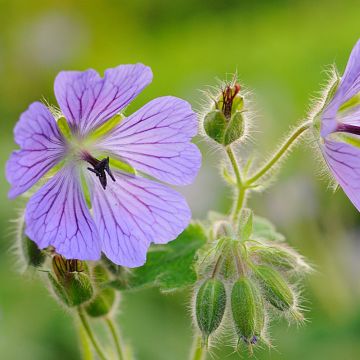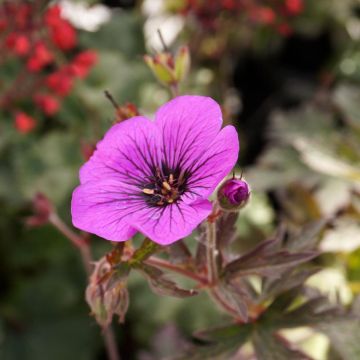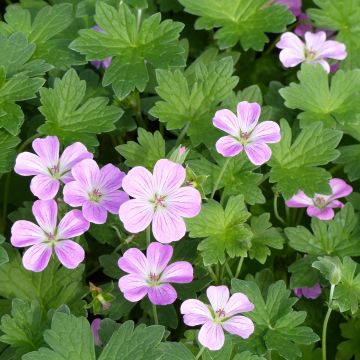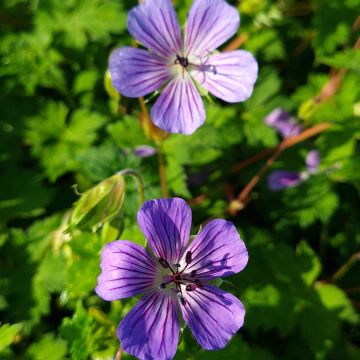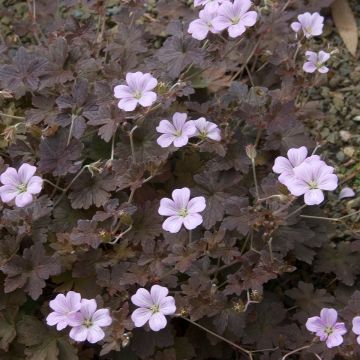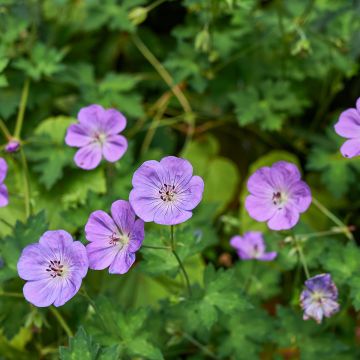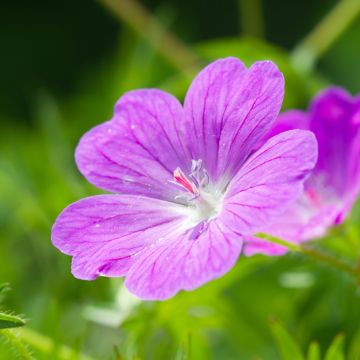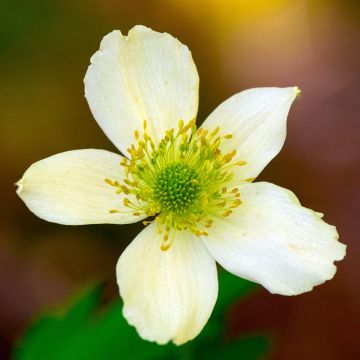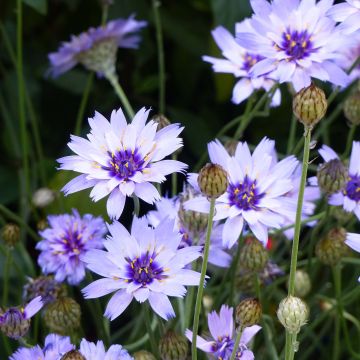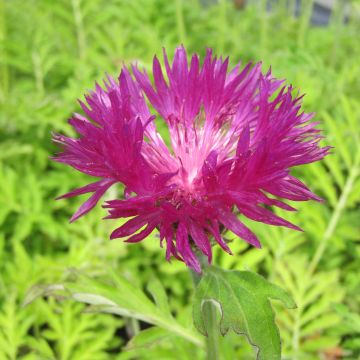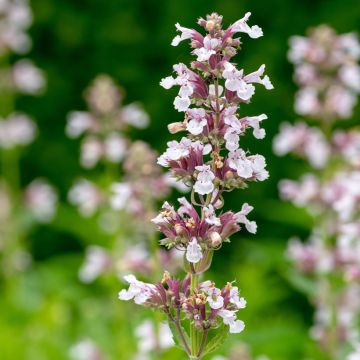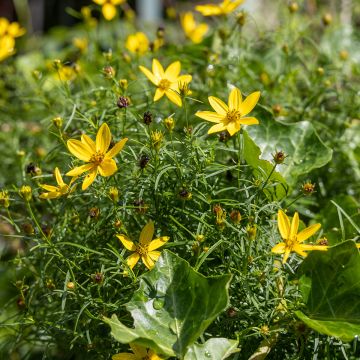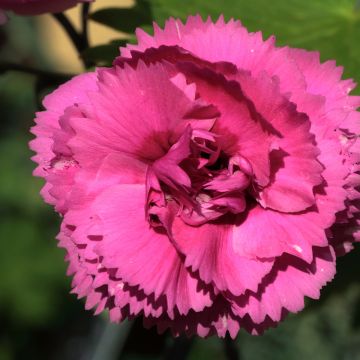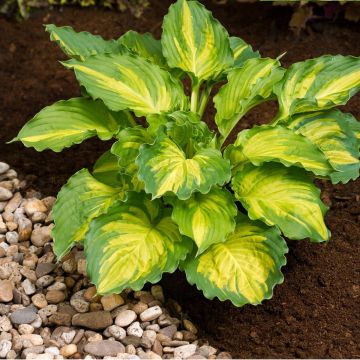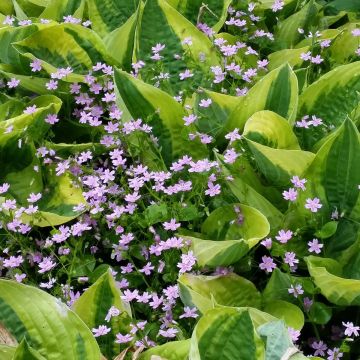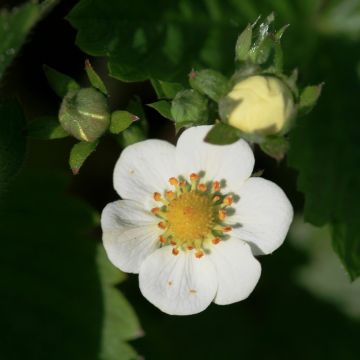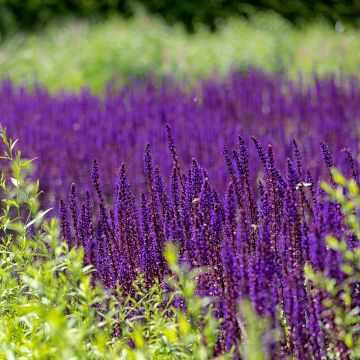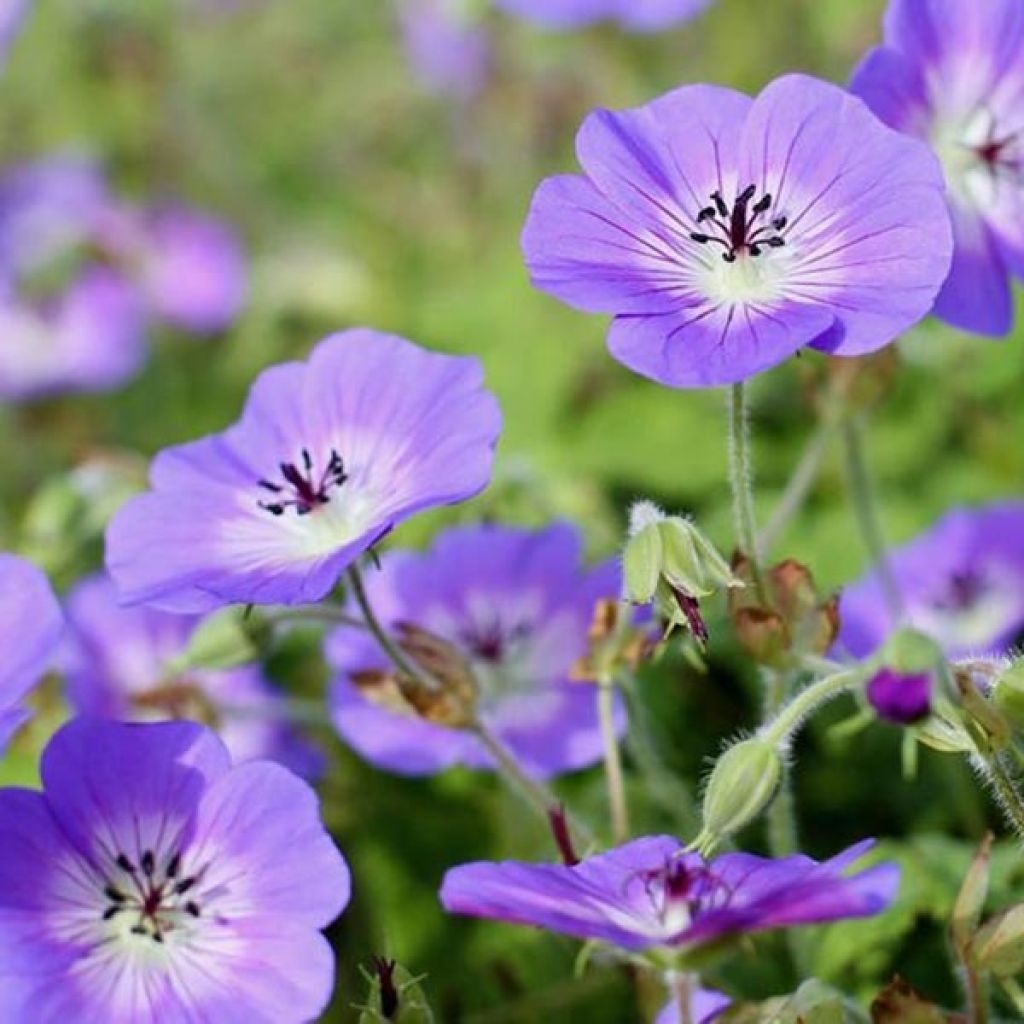

Geranium wallichianum Censation Daily Blue
Geranium wallichianum Censation Daily Blue
Geranium wallichianum Censation Daily Blue
Cranesbill, Wallich's Geranium
This item cannot be shipped to the selected country
Delivery charge from €5.90
More information
Schedule delivery date,
and select date in basket
This plant carries a 12 months recovery warranty
More information
We guarantee the quality of our plants for a full growing cycle, and will replace at our expense any plant that fails to recover under normal climatic and planting conditions.
From €5.90 for pickup delivery and €6.90 for home delivery
Express home delivery from €8.90.
Does this plant fit my garden?
Set up your Plantfit profile →
Description
The Censation Daily Blue Perennial Geranium is a recent Dutch creation, destined for a bright future. On a low and bushy vegetation, a multitude of flowers bloom in cups of light blue-violet with a blue center, from spring until the first frosts. Flowering will also rest at the end of the season, on its often beautifully colored foliage. It makes a delightful ground cover, in full sun or partial shade. Hardy, floriferous and tolerant, it only fears waterlogged soils in winter.
The Geranium wallichianum 'Daily Blue' belongs to the Geraniaceae family. It is a recent selection from the Netherlands, derived from a wild Himalayan species, from Afghanistan to India. In nature, this geranium grows up to about 3600 m (11811ft) in altitude, on slopes, in forests and among shrubbery. 'Daily Blue' has a low, dense and wide dome-shaped habit, reaching about 25-30 cm (10-12in) in height, with a spread of at least 40 cm (16in), sometimes even more depending on the conditions. This geranium has a particularly long flowering period, from June to October-November, depending on the climate. The cup-shaped flowers measure 3 cm (1in) in diameter and are adorned with a luminous hue, a soft and vibrant blue, with light violet veins that dive towards a very pale center. The foliage is deciduous in winter, finely cut and dissected, with a medium green colour that sometimes turns red in autumn. The leaves are deeply lobed, puckered, with serrated edges. This perennial sends out highly branched creeping stems from its stump, which lie lightly on the ground and do not root. It has a fairly specific root system, with a central and single stump (taproot), with a few large fibrous secondary roots.
The 'Daily Blue' Perennial Geranium is ideal for bordering paths or flower beds. In semi-shaded areas, it will thrive alongside 'Burghaltii' Campanula and 'Diane Claire' Pulmonaria with their beautiful silver foliage. It can also be planted on top of a wall, in a semi-shaded rockery where it will lean against it, with its base in the shade and its head in the sun, among Corydalis, Chiastophyllum oppositifolium or Chrysogonum virginianum. It likes to creep under low branches of shrubs, where it is never suffocating, except for weeds.
Report an error about the product description
Geranium wallichianum Censation Daily Blue in pictures
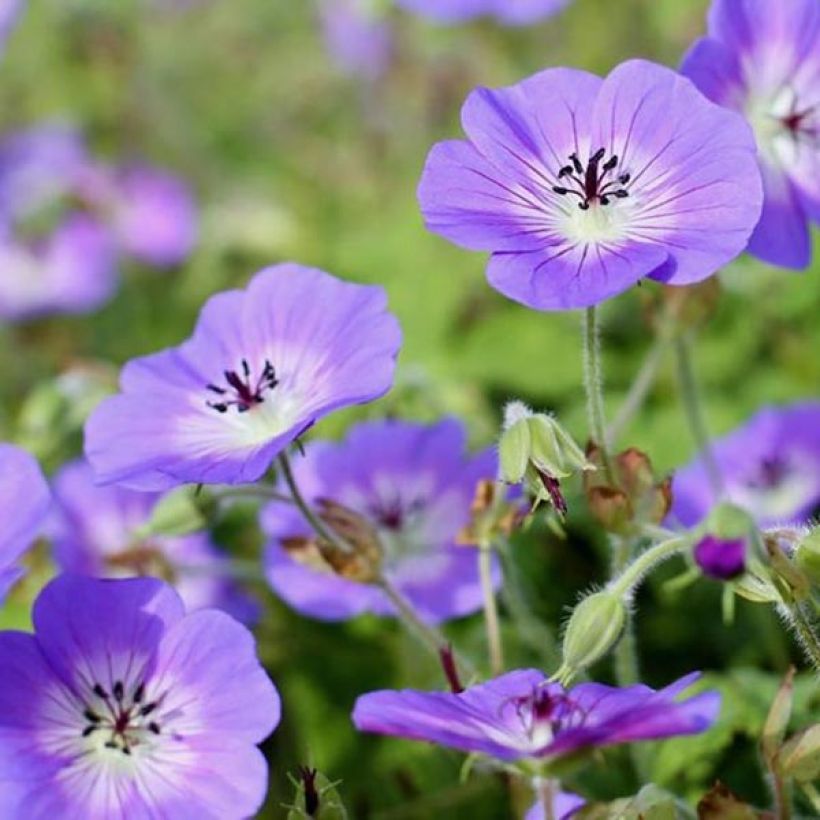

Flowering
Foliage
Plant habit
Botanical data
Geranium
wallichianum
Censation Daily Blue
Geraniaceae
Cranesbill, Wallich's Geranium
Cultivar or hybrid
Other Hardy Geranium - Cranesbill
Planting and care
This perennial geranium enjoys non-scorching sun or partial shade. Install it in a fresh, humus-rich soil, without too much limestone, but well-drained. It particularly dreads waterlogged soils in winter, especially during its youth. Plant it in spring or autumn. Water regularly to help the young plants establish. The faded flowers can be regularly trimmed to encourage a second bloom. This easy-going plant requires little maintenance.
Planting period
Intended location
Care
-
, onOrder confirmed
Reply from on Promesse de fleurs
Summer flowering perennials
Haven't found what you were looking for?
Hardiness is the lowest winter temperature a plant can endure without suffering serious damage or even dying. However, hardiness is affected by location (a sheltered area, such as a patio), protection (winter cover) and soil type (hardiness is improved by well-drained soil).

Photo Sharing Terms & Conditions
In order to encourage gardeners to interact and share their experiences, Promesse de fleurs offers various media enabling content to be uploaded onto its Site - in particular via the ‘Photo sharing’ module.
The User agrees to refrain from:
- Posting any content that is illegal, prejudicial, insulting, racist, inciteful to hatred, revisionist, contrary to public decency, that infringes on privacy or on the privacy rights of third parties, in particular the publicity rights of persons and goods, intellectual property rights, or the right to privacy.
- Submitting content on behalf of a third party;
- Impersonate the identity of a third party and/or publish any personal information about a third party;
In general, the User undertakes to refrain from any unethical behaviour.
All Content (in particular text, comments, files, images, photos, videos, creative works, etc.), which may be subject to property or intellectual property rights, image or other private rights, shall remain the property of the User, subject to the limited rights granted by the terms of the licence granted by Promesse de fleurs as stated below. Users are at liberty to publish or not to publish such Content on the Site, notably via the ‘Photo Sharing’ facility, and accept that this Content shall be made public and freely accessible, notably on the Internet.
Users further acknowledge, undertake to have ,and guarantee that they hold all necessary rights and permissions to publish such material on the Site, in particular with regard to the legislation in force pertaining to any privacy, property, intellectual property, image, or contractual rights, or rights of any other nature. By publishing such Content on the Site, Users acknowledge accepting full liability as publishers of the Content within the meaning of the law, and grant Promesse de fleurs, free of charge, an inclusive, worldwide licence for the said Content for the entire duration of its publication, including all reproduction, representation, up/downloading, displaying, performing, transmission, and storage rights.
Users also grant permission for their name to be linked to the Content and accept that this link may not always be made available.
By engaging in posting material, Users consent to their Content becoming automatically accessible on the Internet, in particular on other sites and/or blogs and/or web pages of the Promesse de fleurs site, including in particular social pages and the Promesse de fleurs catalogue.
Users may secure the removal of entrusted content free of charge by issuing a simple request via our contact form.
The flowering period indicated on our website applies to countries and regions located in USDA zone 8 (France, the United Kingdom, Ireland, the Netherlands, etc.)
It will vary according to where you live:
- In zones 9 to 10 (Italy, Spain, Greece, etc.), flowering will occur about 2 to 4 weeks earlier.
- In zones 6 to 7 (Germany, Poland, Slovenia, and lower mountainous regions), flowering will be delayed by 2 to 3 weeks.
- In zone 5 (Central Europe, Scandinavia), blooming will be delayed by 3 to 5 weeks.
In temperate climates, pruning of spring-flowering shrubs (forsythia, spireas, etc.) should be done just after flowering.
Pruning of summer-flowering shrubs (Indian Lilac, Perovskia, etc.) can be done in winter or spring.
In cold regions as well as with frost-sensitive plants, avoid pruning too early when severe frosts may still occur.
The planting period indicated on our website applies to countries and regions located in USDA zone 8 (France, United Kingdom, Ireland, Netherlands).
It will vary according to where you live:
- In Mediterranean zones (Marseille, Madrid, Milan, etc.), autumn and winter are the best planting periods.
- In continental zones (Strasbourg, Munich, Vienna, etc.), delay planting by 2 to 3 weeks in spring and bring it forward by 2 to 4 weeks in autumn.
- In mountainous regions (the Alps, Pyrenees, Carpathians, etc.), it is best to plant in late spring (May-June) or late summer (August-September).
The harvesting period indicated on our website applies to countries and regions in USDA zone 8 (France, England, Ireland, the Netherlands).
In colder areas (Scandinavia, Poland, Austria...) fruit and vegetable harvests are likely to be delayed by 3-4 weeks.
In warmer areas (Italy, Spain, Greece, etc.), harvesting will probably take place earlier, depending on weather conditions.
The sowing periods indicated on our website apply to countries and regions within USDA Zone 8 (France, UK, Ireland, Netherlands).
In colder areas (Scandinavia, Poland, Austria...), delay any outdoor sowing by 3-4 weeks, or sow under glass.
In warmer climes (Italy, Spain, Greece, etc.), bring outdoor sowing forward by a few weeks.

































